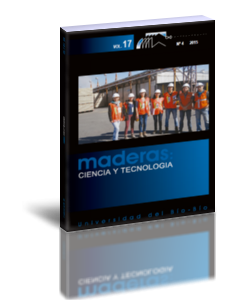The effect of traditional hygro-thermal pretreatments on the acoustical characteristics of white mulberry wood (Morus alba)
Keywords:
Damping coefficient, extractives, vibrational properties, seasoning, water soaking.Abstract
The wood used in making musical instruments usually undergoes pre-treatments or conditioning. Some processes have resulted from laboratory research, while many treatments are applied by craftsmen usingtraditional methods that have not yet been scientifically assessed. This paper is based on laboratory methods which simulate hydrothermal pre-treatments traditionally applied by Iranian lute makers to
mulberry (Morus alba), an important wood for lutes from the Middle East to Japan. By applying a cyclic process, drying (60°C) and ambient re-conditioning, which mimics wood seasoning and short-term
aging, the damping coefficient (tanδ) was decreased down to 10% without negatively affecting specific modulus of elasticity (E’/ρ). Long-term (up to 4 months) soaking in cold water removed extractives, and decreased density as well as E’/ρ, but did not affect tanδ. Short-term hot water treatment removed as many extractives, but caused a smaller decrease in E’/ρ than cold water, and significantly increased
tanδ. This paper helps to clarify some traditional processes used by instrument makers, and can provide a basis for necessary cross-cultural scientific studies in the future.
Downloads
Downloads
How to Cite
Se Golpayegani, A., Brémaud, I., Thevenon, M.-F., Pourtahmasi, K., & Gril, J. (2015). The effect of traditional hygro-thermal pretreatments on the acoustical characteristics of white mulberry wood (Morus alba). Maderas. Ciencia Y Tecnología, 17(4), 821–832. Retrieved from https://revistas.ubiobio.cl/index.php/MCT/article/view/2187
Issue
Section
Article

































